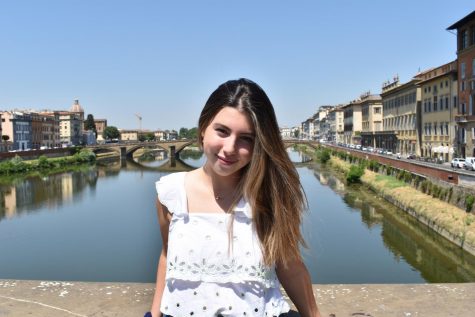Travel influencers fake it until they make it
April 17, 2019
Traveling to the world’s most exotic destinations and sporting designer merchandise used to be privileges limited to the wealthy. But a generation of tech-savvy entrepreneurs revolutionized the travel, fashion and beauty industries, turning their Instagram accounts into sources of income. By using the Instagram feature to label their profiles as business accounts, “travel influencers” attract company sponsorships, which enable them to explore the world’s finest places and of course, ‘Gram them.
How do ordinary people become influencers?
According to Zach Benson, CEO and founder of Assistagram, there is a simple formula. Assistagram, an Instagram management agency, connects high-end clients like the Ritz Carlton and the Four Seasons with large and engaged followings. The service also works with individual influencers to build up their necessary followings. Benson shared the seven steps he advises to his clients with Jules Schroeder from Forbes in a Nov. 2017 article: join alliances with other social media influencers to gain maximum attention; develop a theme for a feed with a focus on high quality; post consistently; use up to 30 commonly used hashtags per post; approach brands and hotels with partnership pitches; learn to speak the hotel language; and establish a unique niche. When it comes to mixing business and social media, there are no limits.
“If you have a big Instagram account, you can use that account to pretty much get anything for free, because big brands want to pay you for exposure,” Benson said.
How real are the lifestyles professional Instagrammers portray to their followers?
A Dec. 2018 article from The Atlantic detailed how followers don’t see the full picture online and making it in the world of influencing is not as simple as Benson claims.
According to The Atlantic, most big influencers with legitimate sponsors worked their way up by faking it. In fact, many of the brand deals that followers see are fake ads to build an account’s credibility. One aspiring influencer, Taylor Evans, paid for an entire Miami vacation but pitched it to her followers as an “exclusive press trip.”
“I took a lot of pics at restaurants and posted ‘Thanks so much XYZ restaurant for the hospitality,’” Evans said. “You say it in a way that people could interpret it as you having an established relationship with that brand. The hope is that it’s perceived in a way that looks like there’s a reason you’re in a different city and state, not just enjoying a weekend vacation.”
Regarding her motivation to pose fake sponsored vacations, Evans told The Atlantic that it “makes you seem like you’re in a position to be getting things for free, which helps you build your brand or media kit.”
“It makes you seem more established, like you have brands that you’re working with,” Evans said. “That means you’re producing good content and you’re worthy of approaching and offering these opportunities to.”
The Federal Trade Commission guidelines require that Instagrammers disclose paid advertisements, yet influencers commonly disregard them. As for rules against making posts falsely appear sponsored, there are none.
Lifestyle influencer Samantha Leibowitz-Bienstock, known on Instagram as Trendy Ambitious Blonde, promoted a Betsey Johnson bag, tagging the company in a post. Leibowitz-Bienstock said that she considered her post a “win” because Betsey Johnson featured it on its website, despite the post being unpaid.
Not all companies welcome these promotions. One business owner said he noticed an increase in mid-level influencers posting content on his behalf, without his consent. He said that he worried that the mediocre quality of “sponsored” content and the people claiming to be brand ambassadors could jeopardize his company’s reputation. Some influencers even thanked his brand for working with them, when in reality they never collaborated.
How can consumers distinguish between real and fabricated sponsorships?
Bloggers’ success depends on their abilities to monetize their taste and decisions, which makes it arduous for followers to determine if an influencer likes a product, is being paid to post it, or just wants to be paid to post it.
Of the thousands of followers influencers rack up, many are kids. Airbrushed figures who spend their lives vacationing in Bora Bora and the Maldives affect kids’ values and aspirations.
The Atlantic article provided examples of teen influencers shaped by other Instagrammers. Nineteen-year-old Brian Phanthao said heavily-impacted high school kids fake their own sponsorships and aspire to the lifestyles of influencers.
Fifteen-year-old Allie said she and her friends faked sponsorships on Instagram as well. “People pretend to have brand deals to seem cool,” Allie said. “It’s a thing, like, I got this for free while all you losers are paying.”
With manipulative fake sponsorships flooding Instagram feeds, users must hesitate to trust Influencers. Enjoy aesthetic photographs and seek inspiration from motivational captions, but don’t fall for the lies embedded in social media.

